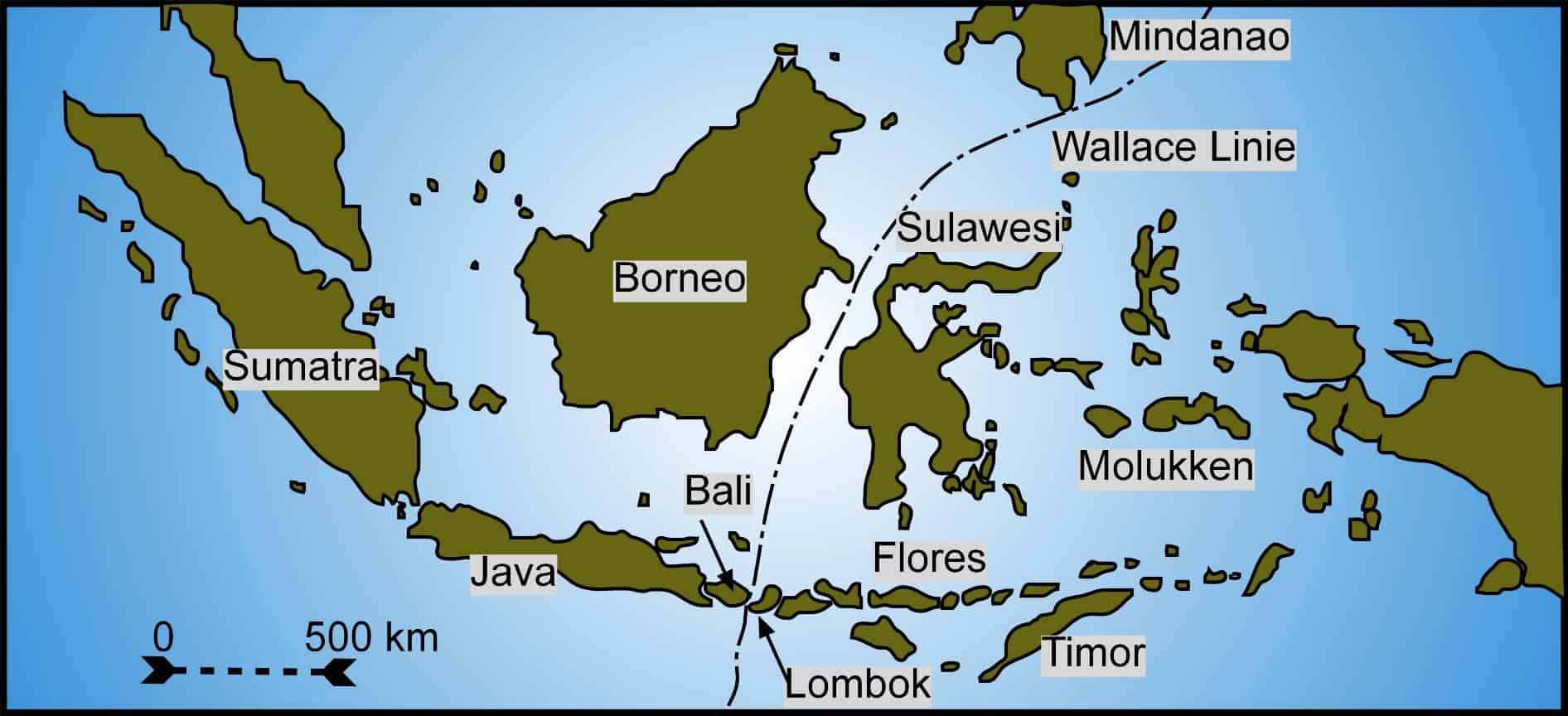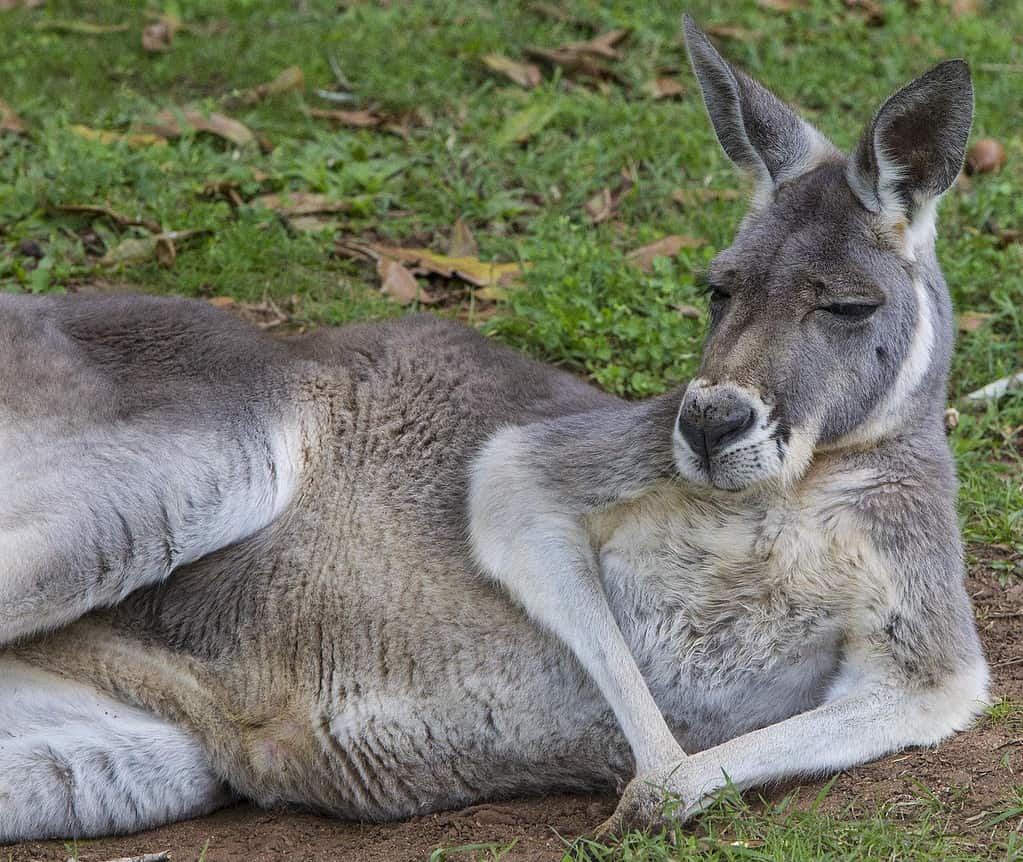
For over 160 years, the Wallace Line has been one of biology’s most enduring mysteries. This invisible boundary, slicing through the Indonesian archipelago, separates two worlds of wildlife. To the west, tigers and rhinos roam. To the east, marsupials and cockatoos dominate.
Scientists have finally solved the puzzle of the mysterious Wallace Line, explaining the uneven distribution of animal species on either side of this boundary. This unseen but impactful line, first mapped out by British naturalist Alfred Russel Wallace in the 19th century, was drawn by a dramatic collision of continents and a climate upheaval that reshaped life on Earth millions of years ago.
The Wallace Line
You’ve likely heard of famed naturalist Charles Darwin, but not a lot of people know that Alfred Russel Wallace, another famous British naturalist, independently proposed a theory of evolution due to natural selection around the same time as Darwin. He is best known, however, for something you might find quite intriguing: the Wallace Line.
In the 19th century, while on an expedition, Wallace noted a surprising contrast in animal species on either side of an invisible boundary running between the Indonesian islands of Borneo and Sulawesi. To the west, the islands— including Borneo, Java, and Sumatra— are home to animals commonly found in Southeast Asia. However, when you move east past the line to islands like Sulawesi, New Guinea, and the Moluccas, the animals are more akin to species found in Australia.
The Wallace Line delineates two distinct zones of animal and plant life. But the curious thing about this line is that it exists despite the geographical proximity of the islands. One might expect a gradual transition of species between areas so close, but that’s not the case here.
It’s as if someone drew a line and said, ‘On this side, you get Asia. On the other, you get Australia.’ Only it wasn’t some divine being that drew the line, but rather natural forces.
This clear division of wildlife has puzzled scientists for over a century. Now, a new study may have finally explained the conundrum: extreme climate change triggered by tectonic activity around 35 million years ago played a crucial role in creating the Wallace Line.
Around that time, Australia drifted away from Antarctica and collided with Asia, causing significant changes in geography and also Earth’s climate. The continental collision birthed the volcanic islands of Indonesia while also opening up a deep ocean surrounding Antarctica. In turn, this led to the formation of the Antarctic Circumpolar Current, which dramatically cooled the climate.
Stepping stones across Indonesia
The findings were made by biologists at the Australian National University (ANU) and ETH Zurich in Switzerland, who ran a computer model that predicts how this ancient tectonic event affected the range and diversification of species. This model revealed that the changing climate affected species differently on both sides of the Wallace Line.
“If you travel to Borneo, you won’t see any marsupial mammals, but if you go to the neighboring island of Sulawesi, you will. Australia, on the other hand, lacks mammals typical of Asia, such as bears, tigers or rhinos,” said Dr. Alex Skeels from ANU.
Although the global cooling caused by the merger of Australia and Asia unleashed a mass extinction event, the climate on the newly formed Indonesian islands was relatively welcoming for life: it was warm, wet, and tropical, much like today.
“So Asian fauna were already well-adapted and comfortable with these conditions, so that helped them settle in Australia,” Skeels said.
“This was not the case for the Australian species. They had evolved in a cooler and increasingly drier climate over time and were therefore less successful in gaining a foothold on the tropical islands compared to the creatures migrating from Asia.”

The researchers hope that their computer model can help forecast how modern-day climate change will impact living species. By understanding how species adapted to historical climate changes, scientists can better predict which species may be more adept at adapting to new environments in the future.
The Wallace Line serves as a demonstration of how geographical and geological factors can influence biodiversity. But it is not the only example. Closer to the Wallace Line, you’ll find two other lines named after the scientists who discovered them: Weber’s Line and Lydekker’s Line.

Weber’s line runs east of the Wallace Line and shows a gradual transition from Asian to Australian species. Further east is Lydekker’s Line, which borders the edge of the Australian continent. Beyond this point, the species are predominantly Asian.
The Aïr and Ténéré Line is another fascinating biogeographical boundary. It runs through the Sahara Desert in Niger, separating the Western Saharan flora from the Eastern Saharan flora. Despite the harsh conditions, the regions on either side of this line boast different plant species adapted to their specific environments.
As the planet warms at an unprecedented rate, understanding these boundaries has never been more urgent. Although their boundaries may be invisible, their impact is very much real.
The findings appeared in the journal Science.


